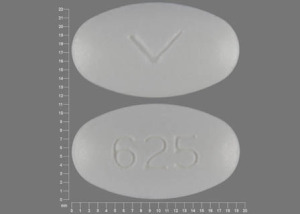Nelfinavir Dosage
Medically reviewed by Drugs.com. Last updated on Apr 4, 2025.
Applies to the following strengths: 250 mg; 625 mg; 50 mg/g
Usual Adult Dose for:
Usual Pediatric Dose for:
Additional dosage information:
Usual Adult Dose for HIV Infection
1250 mg orally twice a day or 750 mg orally 3 times a day
Use: In combination with other antiretroviral agents, for the treatment of HIV-1 infection
Usual Adult Dose for Nonoccupational Exposure
US CDC recommendations: 1250 mg orally twice a day or 750 mg orally 3 times a day
Duration of therapy: 28 days
Comments:
- Recommended as part of an alternative regimen for nonoccupational postexposure prophylaxis of HIV infection
- This drug should be used with (lamivudine or emtricitabine) plus (zidovudine or stavudine or abacavir or tenofovir or didanosine).
- Prophylaxis should be started as soon as possible, within 72 hours of exposure.
- Current guidelines should be consulted for additional information.
Usual Pediatric Dose for HIV Infection
2 to less than 13 years: 45 to 55 mg/kg orally twice a day or 25 to 35 mg/kg orally 3 times a day
Maximum dose: 2500 mg/day
- Oral powder (50 mg/g):
10.5 to less than 12 kg: 550 mg orally twice a day or 350 mg orally 3 times a day
12 to less than 14 kg: 650 mg orally twice a day or 400 mg orally 3 times a day
14 to less than 16 kg: 750 mg orally twice a day or 450 mg orally 3 times a day
16 to less than 18 kg: 500 mg orally 3 times a day
18 to less than 23 kg: 600 mg orally 3 times a day
23 kg or more: 750 mg orally 3 times a day
- Tablets (250 mg):
13 to 18 kg: 750 mg orally twice a day or 500 mg orally 3 times a day
19 to 20 kg: 1000 mg orally twice a day or 500 mg orally 3 times a day
21 kg or more: 1000 to 1250 mg orally twice a day or 750 mg orally 3 times a day
13 years or older:
- Tablets: 1250 mg orally twice a day or 750 mg orally 3 times a day
Comments: For twice-daily dosing, the 250 mg tablets are recommended for children weighing 16 kg or more.
Use: In combination with other antiretroviral agents, for the treatment of HIV-1 infection
Renal Dose Adjustments
Data not available
Liver Dose Adjustments
Mild liver dysfunction (Child-Pugh A, score 5 to 6): No adjustment recommended.
Moderate or severe liver dysfunction (Child-Pugh B or C, score at least 7): Not recommended.
Precautions
In pediatric patients less than 2 years of age, this drug was found to be safe at the doses studied; however, a reliably effective dose could not be established.
Consult WARNINGS section for additional precautions.
Dialysis
Data not available
Comments: Significant removal via dialysis is not likely (highly protein bound)
Other Comments
Administration advice:
- Administer all doses with a meal (for optimal absorption).
- For patients unable to swallow the tablets: Place tablet(s) in small amount of water; once dissolved, mix the cloudy liquid well, then consume immediately; rinse the glass with water and swallow the rinse to ensure the entire dose is consumed.
- Mix the measured dose of the oral powder with a small amount of water, milk, formula, soy formula, soy milk, or dietary supplements; once mixed, consume the entire contents in order to obtain the full dose; if the mixture is not consumed immediately, it must be stored under refrigeration, but storage must not exceed 6 hours.
- Consult the manufacturer product information regarding missed doses.
Storage requirements:
- Store at 15C to 30C (59F to 86F).
- Store in original bottle and keep tightly closed.
Reconstitution/preparation techniques:
- Acidic foods or juices (e.g., orange juice, apple juice, apple sauce) should not be mixed with the oral powder as a bitter taste may result.
- The oral powder should not be reconstituted with water in its original container.
General:
- The oral powder contains 50 mg (as nelfinavir free base) in each level scoopful (1 g).
- If a teaspoon is used to measure the oral powder, 1 level teaspoon contains 200 mg of nelfinavir (4 level scoops equals 1 level teaspoon).
Monitoring:
- Hematologic: Bleeding in hemophiliacs
Frequently asked questions
More about nelfinavir
- Check interactions
- Compare alternatives
- Side effects
- During pregnancy
- Drug class: protease inhibitors
- Breastfeeding
- En español
Patient resources
Other brands
Professional resources
Other brands
Related treatment guides
See also:
Further information
Always consult your healthcare provider to ensure the information displayed on this page applies to your personal circumstances.


